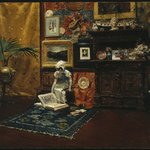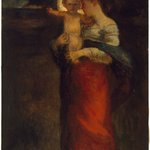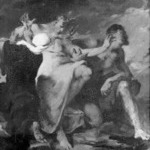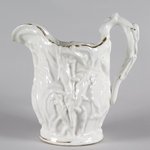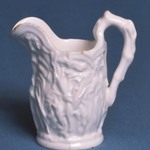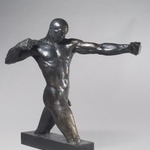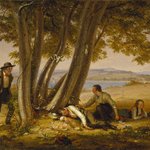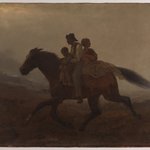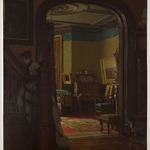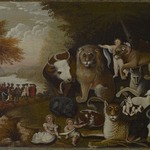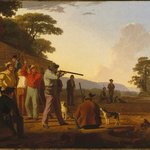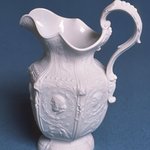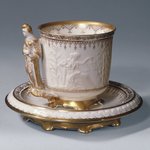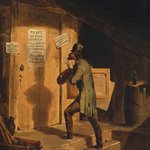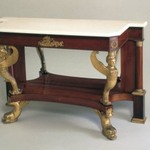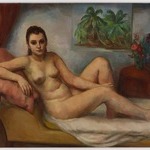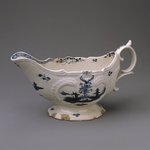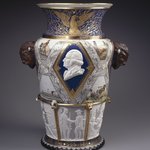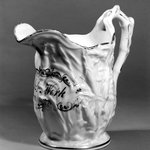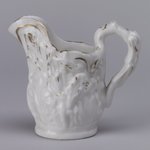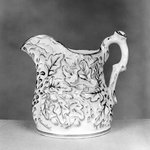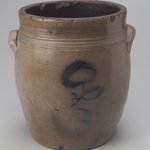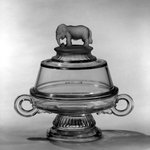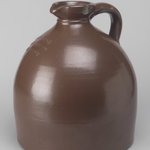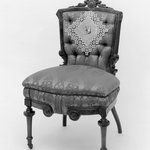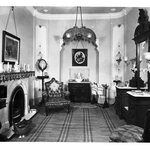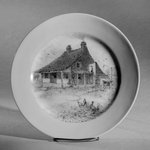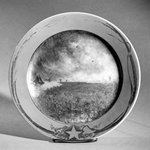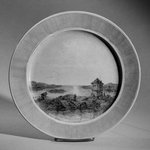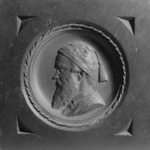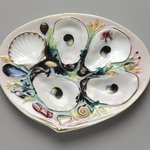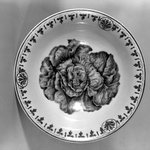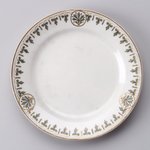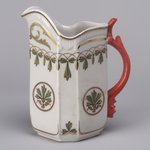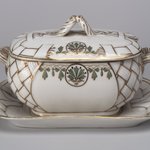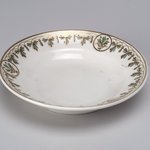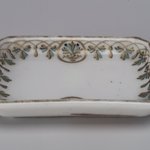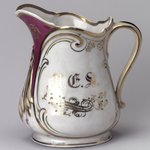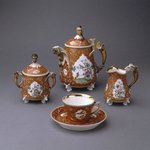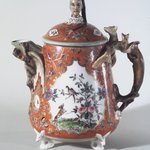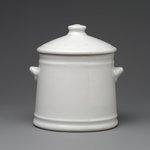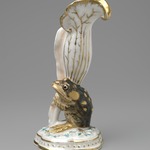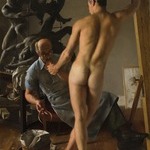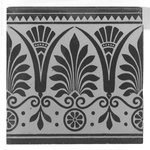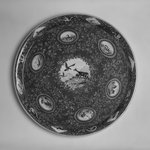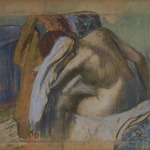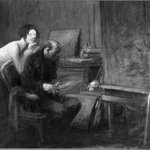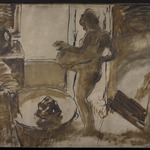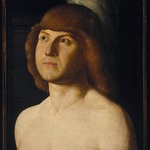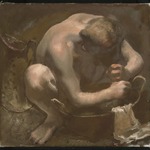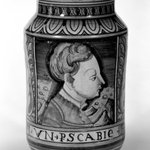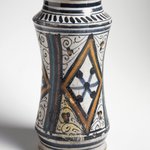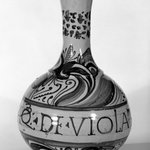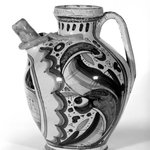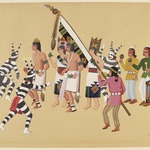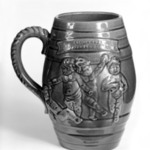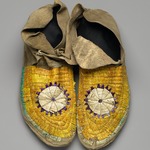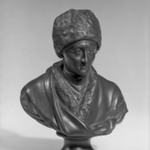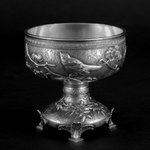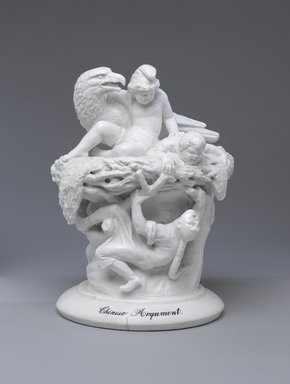
"Chinese Argument" Figural Group
Decorative Arts and Design
Who is allowed into the American eagle’s nest? Although this figural group incorporates nineteenth-century racial stereotypes, it was a cry against discrimination. A white child wearing the cap of liberty shares the eagle’s nest with a Black child, who is nevertheless pressed down. The Chinese man’s attempt to join them is clearly doomed.
This sculpture reflects the debate surrounding the 1882 Chinese Exclusion Act, which curtailed Chinese immigration. The influx of Chinese workers began in earnest with the California Gold Rush of 1848. With an economic downturn in the 1870s, many Americans saw Chinese immigrants as competition for scarce jobs.
This sculpture reflects the debate surrounding the 1882 Chinese Exclusion Act, which curtailed Chinese immigration. The influx of Chinese workers began in earnest with the California Gold Rush of 1848. With an economic downturn in the 1870s, many Americans saw Chinese immigrants as competition for scarce jobs.
MANUFACTURER
Union Porcelain Works, 1863–ca. 1922
MEDIUM
Porcelain
DATES
ca. 1882
DIMENSIONS
H: 11 1/4 in. (28.6 cm) (show scale)



INSCRIPTIONS
on front bottom of base in black: "Chinese Argument"
COLLECTIONS
Decorative Arts and Design
ACCESSION NUMBER
2009.70
CREDIT LINE
Gift of John D. Rockefeller III and Eleanor Wallace, by exchange
CATALOGUE DESCRIPTION
A complex sculptural group depicting a nest on top of a tree trunk. In the nest are an eagle at the back, and at center a nude putto in a slouching Phrygian cap with right arm about the neck of the eagle and left arm extended and holding down a young black boy at the front of the nest. On the tree trunk is a Chinese man trying to climb into the nest. There are rodents nestled in holes in the tree, all on a raised stepped circular base. Overall matte glaze.
EXHIBITIONS
MUSEUM LOCATION
This item is not on view
CAPTION
Karl L. H. Müller (American, born Germany, 1820–1887). "Chinese Argument" Figural Group, ca. 1882. Porcelain, H: 11 1/4 in. (28.6 cm). Brooklyn Museum, Gift of John D. Rockefeller III and Eleanor Wallace, by exchange, 2009.70. Creative Commons-BY (Photo: Brooklyn Museum, 2009.70_PS9.jpg)
IMAGE
overall, 2009.70_PS9.jpg. Brooklyn Museum photograph, 2013
"CUR" at the beginning of an image file name means that the image was created by a curatorial staff member. These study images may be digital point-and-shoot photographs, when we don\'t yet have high-quality studio photography, or they may be scans of older negatives, slides, or photographic prints, providing historical documentation of the object.
RIGHTS STATEMENT
Creative Commons-BY
You may download and use Brooklyn Museum images of this three-dimensional work in accordance with a Creative Commons license. Fair use, as understood under the United States Copyright Act, may also apply.
Please include caption information from this page and credit the Brooklyn Museum. If you need a high resolution file, please fill out our online application form (charges apply).
For further information about copyright, we recommend resources at the United States Library of Congress, Cornell University, Copyright and Cultural Institutions: Guidelines for U.S. Libraries, Archives, and Museums, and Copyright Watch.
For more information about the Museum's rights project, including how rights types are assigned, please see our blog posts on copyright.
If you have any information regarding this work and rights to it, please contact copyright@brooklynmuseum.org.
RECORD COMPLETENESS
Not every record you will find here is complete. More information is available for some works than for others, and some entries have been updated more recently. Records are frequently reviewed and revised, and we welcome any additional information you might have.
